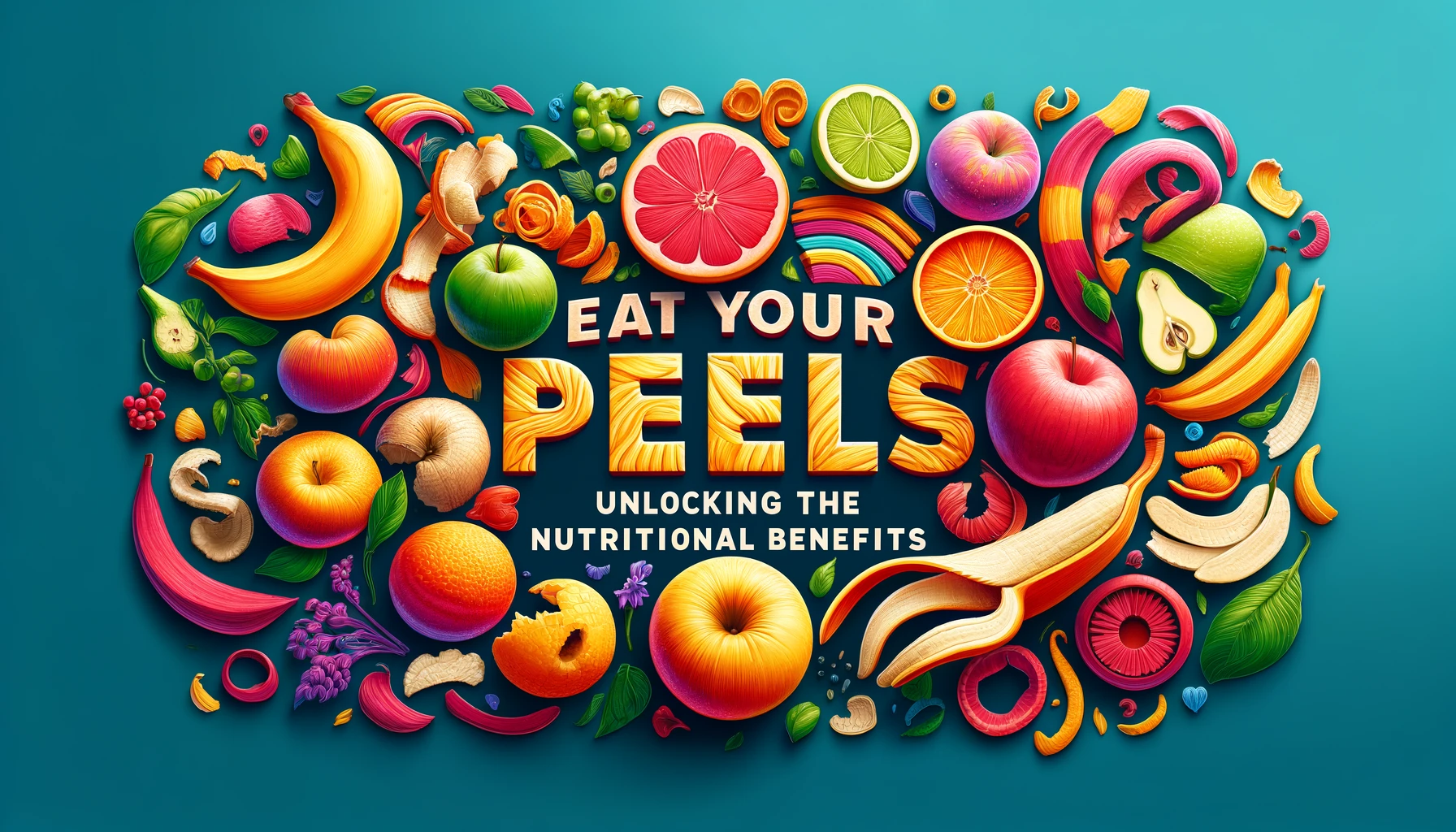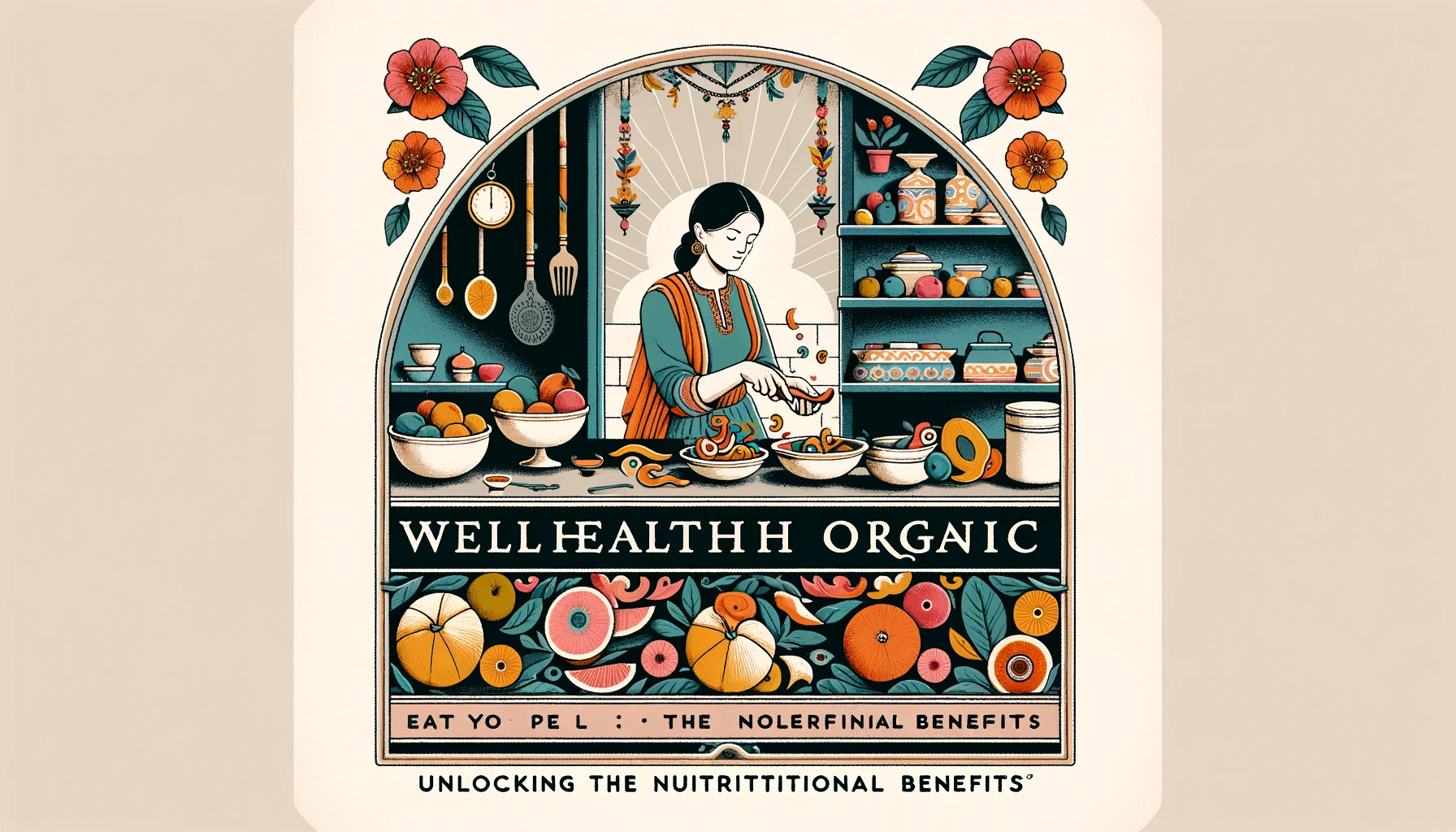
Introduction to Nutritional Peels
Nutritional Peels refers to the often discarded outer layers of fruits and vegetables which are packed with essential nutrients and health benefits. This section delves into the underrated value of these peels, exploring their nutritional content and the advantages of including them in our diet. The focus extends beyond mere consumption, discussing innovative ways to integrate these peels into daily meals, thereby enhancing both the flavor and nutritional profile of our food.
Overview of the Health Benefits of Fruit and Vegetable Peels
Fruit and vegetable peels are treasure troves of vitamins, minerals, fiber, and antioxidants. The outer layers, which we often discard, can actually play a significant role in enhancing our health. For instance, the peels of apples, potatoes, and cucumbers are known to contain higher concentrations of nutrients than their fleshy interiors. This subsection outlines the health benefits of consuming these peels, from boosting the immune system and improving digestion to potential roles in preventing chronic diseases. It also emphasizes the environmental impact of reducing food waste by utilizing the whole fruit or vegetable.
Eat Your Peels: Unlocking the Nutritional Benefits
When it comes to optimizing your health, every little aspect of your diet counts, including the often-discarded peels of fruits and vegetables. “”Eat Your Peels: Unlocking the Nutritional Benefits”” explores the hidden nutritional treasures found in the peels of everyday produce. Rich in vitamins, minerals, and fiber, these peels can offer remarkable health benefits, from enhancing digestive health to boosting your immune system. This section delves into why incorporating more peels into your diet can contribute to a healthier, more balanced lifestyle, underlining the importance of understanding and utilizing the whole fruit or vegetable.
Detailed Exploration of Nutrients Found in Common Peels
Did you know that the peel of an apple contains over half of the fruit’s overall dietary fiber and a significant proportion of vitamin C? This subsection takes a closer look at the specific nutrients found in the peels of common fruits and vegetables like apples, bananas, potatoes, and cucumbers. Each peel not only adds a texture and flavor twist but also brings along powerful antioxidants, essential oils, and anti-inflammatory properties that can greatly benefit one’s health. Through this detailed exploration, readers will be encouraged to rethink their habit of peeling fruits and vegetables before consumption, armed with knowledge on the substantial health impacts these outer layers carry.
Peels in the Kitchen: Creative Ways to Use Them

In the realm of kitchen creativity, fruit and vegetable peels are often overlooked as mere waste. However, section 3 of our comprehensive guide explores the myriad of ways these humble byproducts can transform your cooking. This section doesn’t just advocate for sustainability but also elevates the nutritional profile of everyday meals. From zesty garnishes to robust flavor enhancers, we’ll show you how to integrate peels into your kitchen practices effectively and deliciously.
Recipes Incorporating Fruit and Vegetable Peels
Imagine transforming ordinary dishes into culinary wonders just by incorporating peels. This subsection dives into innovative recipes that utilize the vibrant flavors and textures of fruit and vegetable peels. Whether you’re whipping up a batch of crispy potato peel chips, adding citrus zest to brighten up your desserts, or using apple peels for a flavorful tea, these recipes not only promise to delight your taste buds but also contribute to a zero-waste kitchen. Each recipe is carefully designed to ensure that you harness every ounce of natural goodness from your fruits and vegetables.
The Science Behind Peel Nutrition
The Science Behind Peel Nutrition explores the comprehensive research and scientific findings that support the health benefits of consuming fruit and vegetable peels. This section delves into various studies that reveal the hidden nutrients in peels and their impact on overall well-being.
Scientific Studies on the Health Advantages of Eating Peels
Recent research has unpacked the myriad of benefits provided by the outer layers of fruits and vegetables. Studies indicate that peels are often rich in vital nutrients such as fiber, vitamins, and antioxidants, which can contribute significantly to cardiovascular health, reduced inflammation, and enhanced digestive wellness. For example, citrus peels contain high levels of flavonoids that have been shown to possess anti-inflammatory, anti-carcinogenic, and anti-viral properties. These findings not only challenge the conventional practice of peeling before eating but also encourage a shift towards a more holistic approach to consuming produce.
This section also examines the role of peels in modern nutrition science. It discusses how peels can aid in the management of certain diseases, such as diabetes, by moderating glucose levels and improving insulin sensitivity. Scientific insights into how peels can aid detoxification processes in the body are also discussed, highlighting their role in liver health and weight management. Overall, these studies provide a compelling argument for the inclusion of peels in a balanced diet, citing not just health benefits but also environmental advantages by reducing food waste.
Comparative Analysis: Peels vs. Peeled
In the realm of nutrition, the debate between eating peels versus peeled fruits and vegetables is a topic of significant discussion. This section offers a detailed comparative analysis aimed at understanding the nutritional differences and potential health impacts of consuming produce with or without the peel. Often overlooked, peels not only provide a substantial amount of essential nutrients like fiber, vitamins, and minerals but also contain various antioxidants that are reduced or missing entirely in their peeled counterparts.
Nutritional Differences Between Peeled and Unpeeled Fruits and Vegetables
Fruits and vegetables are integral components of a healthy diet, but the way we choose to consume them can impact the benefits they offer. Peels often contain higher concentrations of nutrients than the flesh alone. For instance, apple peels are rich in vitamins, minerals, and fibers that are largely diminished once they are removed. On the other hand, removing peels can reduce the intake of potential pesticides and contaminants, though this can largely be mitigated through proper washing and handling. This subsection analyzes these aspects to guide consumers towards making informed dietary choices.

Safety First: When to Avoid Eating Peels
Incorporating fruit and vegetable peels into your diet can boost your nutritional intake, but it’s crucial to know when and why certain peels should be avoided. Although many peels are edible and nutritious, factors like pesticide residues, potential contaminants, and the presence of harmful chemicals can render some peels unsafe for consumption. In this section, we provide essential guidelines to help you identify situations where it’s better to peel your fruits and vegetables to ensure your food is safe to eat.
Guidelines on When and Why to Avoid Certain Peels
Not all peels are created equal. For instance, the peels of non-organic fruits and vegetables may carry high levels of pesticides that are difficult to wash off completely. Specifically, fruits like apples, peaches, and grapes, and vegetables such as bell peppers and potatoes often appear on the ‘dirty dozen’ list due to their high pesticide content when not organically grown. Moreover, some peels, like those of citrus fruits, might be treated with wax or chemical preservatives to extend their shelf life, which are not designed for consumption. This subsection will help you navigate the complexities of safely including or excluding peels in your diet based on the latest research and guidelines.
Peel Preparation: Best Practices
Peel Preparation is essential to safely and effectively incorporate the nutritional benefits of fruit and vegetable peels into your diet. This section provides detailed insights and best practices to ensure that you maximize the health advantages while minimizing any potential risks associated with peel consumption.
Tips for Preparing Peels
To start, always opt for organic fruits and vegetables to avoid harmful pesticides that can linger on the skin. Washing your produce thoroughly under running water is another crucial step. A soft brush can be used to remove extra dirt and residues from the surface of rough-textured peels such as potatoes or carrots. For smoother peels like apples or pears, rubbing gently with your hands might be sufficient. These initial steps help in reducing the presence of contaminants and pesticides, making peels safer to eat.
Techniques for Consuming Peels
Once thoroughly cleaned, there are numerous ways to incorporate these peels into your meals. Grating lemon or orange zest adds flavor to baked goods and salads, while finely chopping peels from carrots or cucumbers can enhance the texture and nutrient profile of your dishes. Cooking or baking peels can also break down harder textures, making them more palatable and easier to digest. Remember, the goal is not only to use peels for their nutritional value but also to explore creative methods to make your meals more exciting and flavorful.

Community Voices: Testimonials and Stories
Community Voices is a pivotal section that brings to light personal experiences and shared wisdom from the readers of WellHealthOrganic.com. This section is deeply rooted in the real-life stories of individuals who have incorporated fruit and vegetable peels into their daily diets. Through their testimonials, we gain insight into the practical aspects of making nutritional peels a part of everyday health routines.
Personal Success Stories
In this subsection, we hear directly from those who have benefited from including more peels in their meals. Whether it’s improved digestion, enhanced skin health, or weight management, the stories shared here resonate with authenticity and practicality. These personal accounts not only inspire but also offer tangible examples of how small changes, like adding apple peel to morning oatmeal or using potato skin in a dinner recipe, can lead to significant health benefits.
Advice and Tips from Our Readers
This part of Section 8 focuses on gathering and sharing advice and tips from our community. It acts as a pool of knowledge where readers contribute their best practices for incorporating peels in various dishes, as well as warnings and precautions to consider. These contributions help foster a community-centric approach to health and well-being, where collective knowledge powers individual lifestyle enhancements.
Overall, Community Voices stands as a testament to the power of sharing and the importance of community in achieving better health outcomes. It emphasizes that sometimes, the most valuable health advice comes not from experts, but from the everyday experiences of people just like us.
